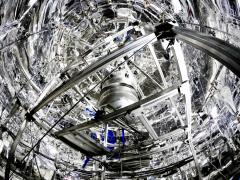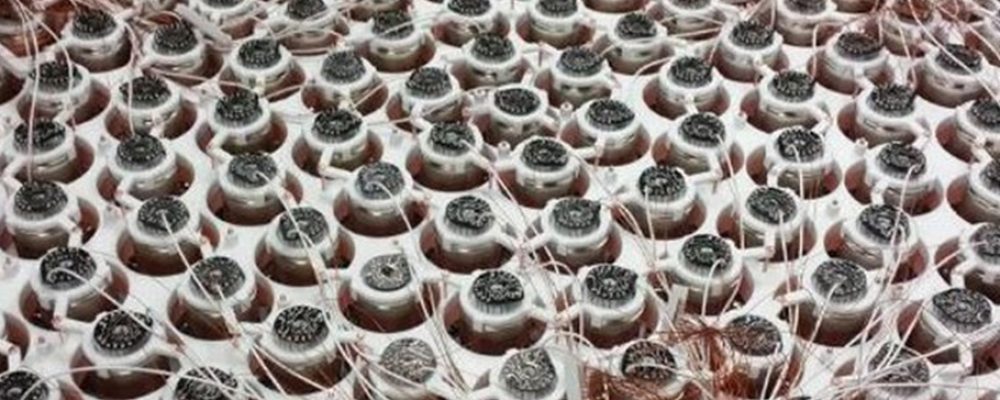NYU Abu Dhabi (NYUAD) researchers are part of an international team of scientists that has, for the first time, directly measured the rarest nuclear decay process ever recorded by a detector. Using the XENON1T detector, an instrument located at the underground Gran Sasso National Laboratory in Italy designed to search for dark matter with unprecedented sensitivity, the researchers were able to observe the decay of Xenon-124 atomic nuclei for the first time.
This measurement, while not directly linked to the Dark Matter search, is extremely relevant for nuclear physics, as it represents a first step towards the search for other possibly more elusive phenomena. The findings are featured on the cover of the current edition of the journal Nature.
The Gran Sasso Laboratory of the National Institute for Nuclear Physics (INFN) in Italy, where scientists are currently searching for dark matter particles, is located about 1,400 meters beneath the Gran Sasso massif, well protected from cosmic rays which can produce false signals. The XENON1T uses 3,200 kilograms of liquid xenon at a temperature of –95° C to look for interactions of dark matter particles with the xenon atoms of the detector. The xenon is contained in a cylindrical tank that is placed at the center of a 700,000-liter water tank which further protects the detector from unwanted radioactivity. XENON1T is currently the most sensitive dark matter experiment in the world.
This new study shows that the XENON1T detector is also able to measure other physical phenomena, including double electron capture, a very rare process that is typically obscured by signals from natural radioactivity.
Half-life measures the time it takes for half of the radioactive nuclei present in a substance to decay. The half-life measured for Xenon-124 by the XENON1T detector has the enormously large value of 1.8×1022 years for this process: approximately one trillion times longer than the age of the universe, making the observed radioactive decay – the double electron capture of Xenon-124 – the rarest process ever observed in a detector.
The XENON program group consists of 21 research groups from the UAE and around the globe. NYU Abu Dhabi is an active partner through the research group led by Associate Dean of Science and Associate Professor of Physics Francesco Arneodo, who joined the University in 2013 after spending 20 years at the Gran Sasso Laboratory, and more than a decade working on the XENON project.
Other members from NYU Abu Dhabi include Lecturer of Physics Mohamed Lotfi Benabderrahmane, Research Scientist Adriano Di Giovanni, Research Associate Gianmarco Bruno, and Postdoctoral Researcher Laura Manenti, all of whom looked after the XENON1T purification system of the water shield and the frontline operations team.
Arneodo commented: “The XENON1T experiment is a huge scientific and technological achievement. This particular measurement shows its extraordinary performance and opens the door for other exciting measurements in Neutrino Physics. Plus, it shows that if anyone can detect dark matter, it must be us!”
Manenti said: “I am so proud that NYU Abu Dhabi is part of a team that could soon unveil the nature of dark matter and leave a mark in history. This measurement proves how well the detector is working.”
The scientists are currently upgrading the experiment for the new XENONnT phase of their research, which will utilize a much larger active detector mass and a reduced background level to significantly increase the detector’s sensitivity.






